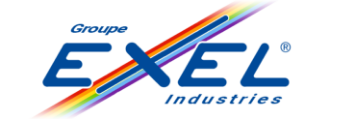
The origins of EXXACT Robotics
Reducing inputs, improving soil treatment, adapting to climate change...
Global agricultural practices are changing at an alarming pace under the pressure from public opinion and government bodies and in response to the urgent need to achieve carbon neutrality. A leading supplier of spraying solutions and preferred partner for farmers, EXEL Industries strives to develop solutions that contribute towards achieving the bold targets set in relation to the agroecological transition. Innovation requirements are growing and concern all Group brands.
Prompted by these findings, in 2019 the Group created EXXACT Robotics, a pooled research center dedicated to precision agricultural innovation. EXXACT Robotics swiftly took shape under the guidance of Colin Chaballier, who set up a team of expert engineers and doctors in robotics, artificial intelligence, mechatronics and agronomy. EXXACT Robotics currently employs 25 people and continues to hire high-tech profiles. Its goal is clear: To design and provide farmers with sustainable and pragmatic technological solutions in order to drive the global agricultural transition.
Precision spraying, a global need
As the global population soars towards 10 billion human beings by 2050, it is essential to increase global food production. Production of grains (wheat, rice, corn, etc.) must therefore increase from 2.7 to 3.5 billion metric tons per year in under 30 years while drastically reducing the use of inputs in order to preserve ecosystems.
A huge challenge and yet… within reach! To prove it, between 1970 and 2020 agricultural production doubled while the volume of active substances applied was divided by three over the same period. As a global spraying specialist, EXEL Industries is particularly committed to the technological development of spraying solutions. Having championed the quest for “the right dose in the right place at the right time”, the Group plans to take a further step forward with the concept of “New Spraying”.
Successive technological innovations have significantly improved precision and quality in the application of products while achieving significant dose reductions ranging from 30% to ultimately 80%. Innovations include drift reduction, flow rate adjustment depending on speed or on the spray boom when turning, in-field GPS tracking, avoidance of non-treatment zones, and, last but not least, spot spraying solutions that direct the nozzle at the areas to be sprayed via visual recognition of weeds.
3S Spot Spray Sensor®, the EXXACT Robotics technology for precision spraying
EXXACT Robotics has developed a high-tech solution for real-time capture and analysis of images using artificial intelligence to detect bio-aggressors such as weeds, diseases, and pests.
On-board high-precision sensors enable immediate capture of data that is analyzed in real time by 3S Spot Spray Sensor® technology. The information is then sent to the sprayer in order to administer only the right dose in the right place.
EXXACT Robotics has successfully risen to the challenge of bringing to market a technology fully integrated into the spray booms of EXEL Industries brand sprayers which can be used on both empty fields and large-scale crops, day and night, at speeds of up to 15 mph.
The first spray booms fitted with 3S Spot Spray Sensor® technology will be marketed from late 2022 for herbicidal application and gradually incorporated into the EXEL Industries brands.
A pragmatic roadmap
A true autonomous R&D unit serving the EXEL Industries group, EXXACT Robotics has drawn up a bold but pragmatic set of specifications geared towards achieving a single goal: develop reliable technology for precision spraying. A real working solution for farmers worldwide: Suitable for all spraying operations involving plant protection products or fertilizers.
Direct benefits for farmers
EXXACT Robotics has left no stone unturned in its quest to make farmers’ lives easier. Sensors are directly integrated into the spray boom for optimum stability control. 3S Spot Spray Sensor® technology communicates directly with the sprayer regulation system for improved spraying efficiency. The 3S Spot Spray Sensor® control console is ergonomically built into the cabin to facilitate use.
Thanks to the spray regulation systems, input volumes are drastically reduced while optimizing crop yields. There is no loss of time, as the technology can be used at normal speeds and up to15 mph.
Configurable to all sprayer models
3S Spot Spray Sensor® technology can be adapted to all sprayer models:
- Low density: one sensor every 3 meters for high precision on the most widespread systems. Ideal for boom section control.
- High density: one sensor per meter for optimum precision and improved management of shaded areas in row crops. Ideal for nozzle spraying.
Prestigious partnerships
In order to corroborate the expected benefits of 3S Spot Spray Sensor® technology, EXXACT Robotics has entered into partnerships with the world’s leading scientific experts.
Eurofins Agroscience Services and Wageningen Plant Research, a department of Wageningen University & Research, are currently helping develop new scientific methodologies to measure the operational performance of the 3S Spot Spray Sensor® system.
Bold ambitions for global deployment
Developed in close collaboration with the EXEL Industries brands, 3S Spot Spray Sensor® technology will be gradually deployed on the spraying equipment manufactured by the EXEL Industries brands (Agrifac, Apache, Berthoud, Evrard, Hardi and Tecnoma).
The first sprayers fitted with 3S Spot Spray Sensor® technology will be available from late 2022 and will be presented at the upcoming Agritechnica trade show in February 2022, primarily for herbicidal application. Meanwhile, EXXACT Robotics is continuing its development work in line with the following schedule:
- 2024 introduction of nitrogen fertilizer capabilities
- 2025 introduction of fungicide capabilities
- 2026 introduction of insecticide capabilities

